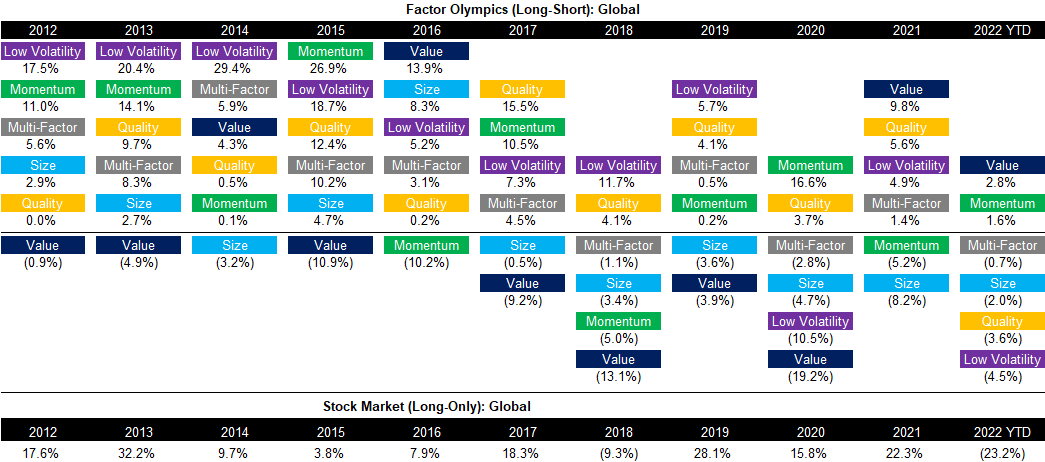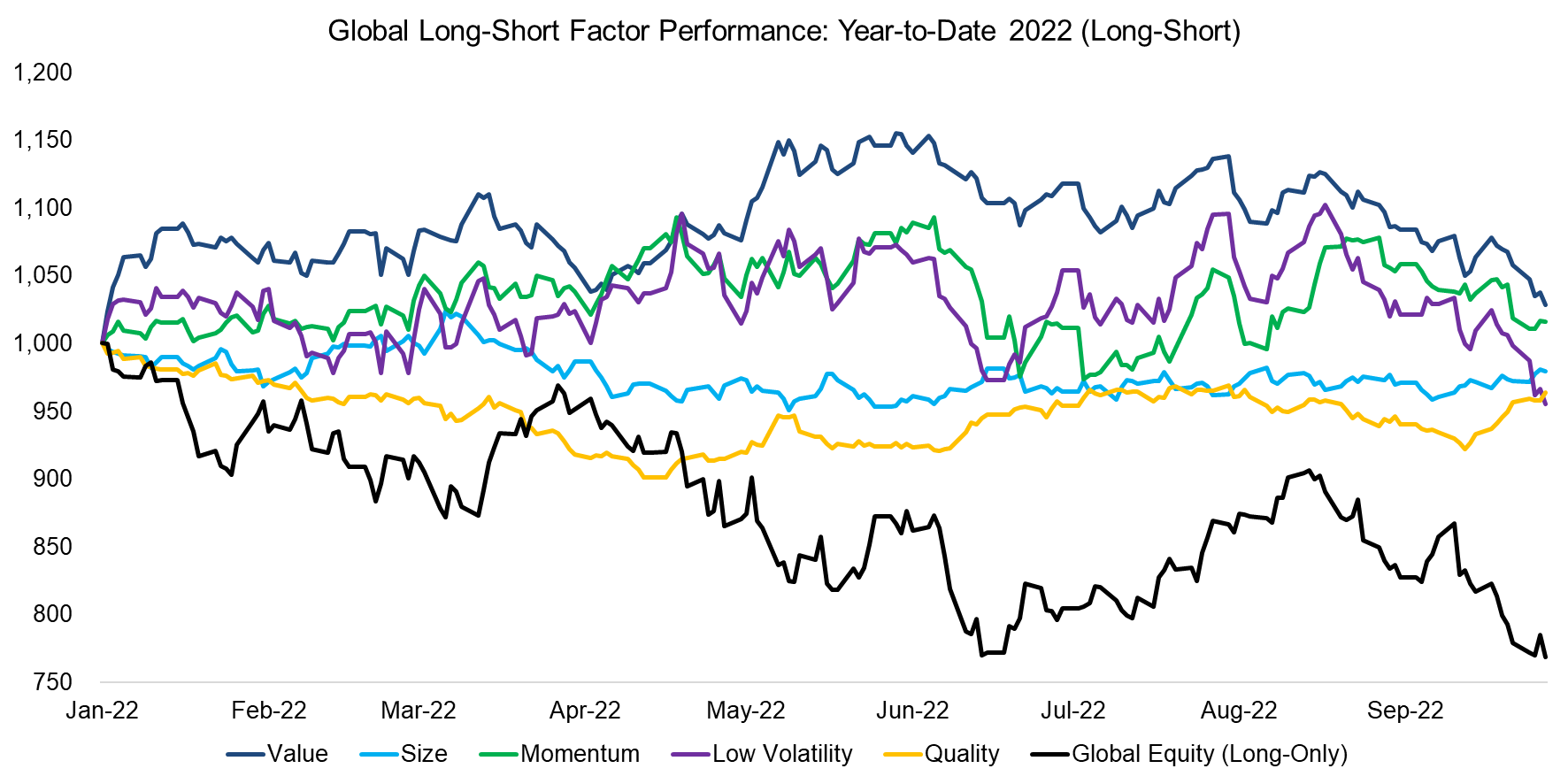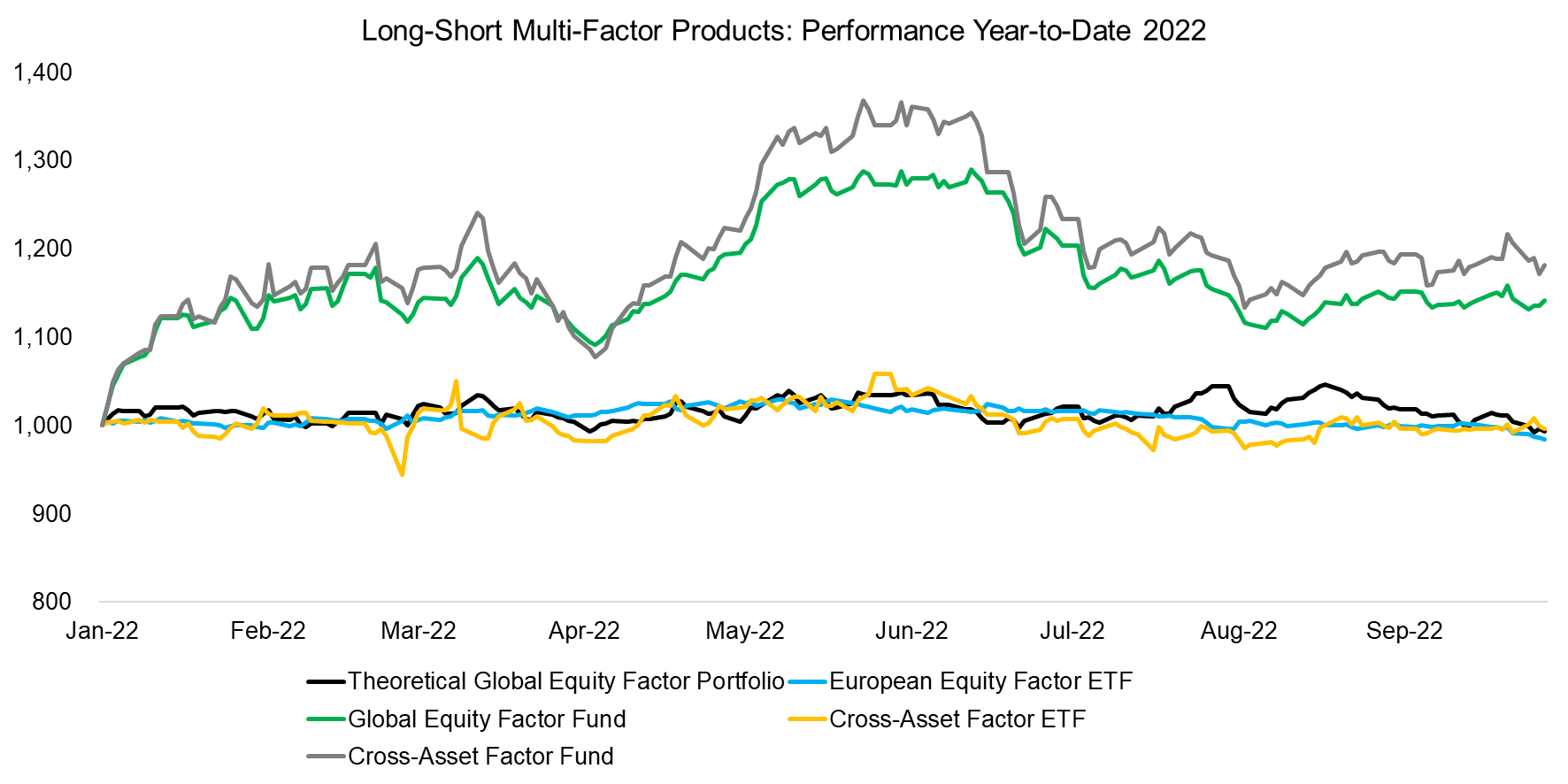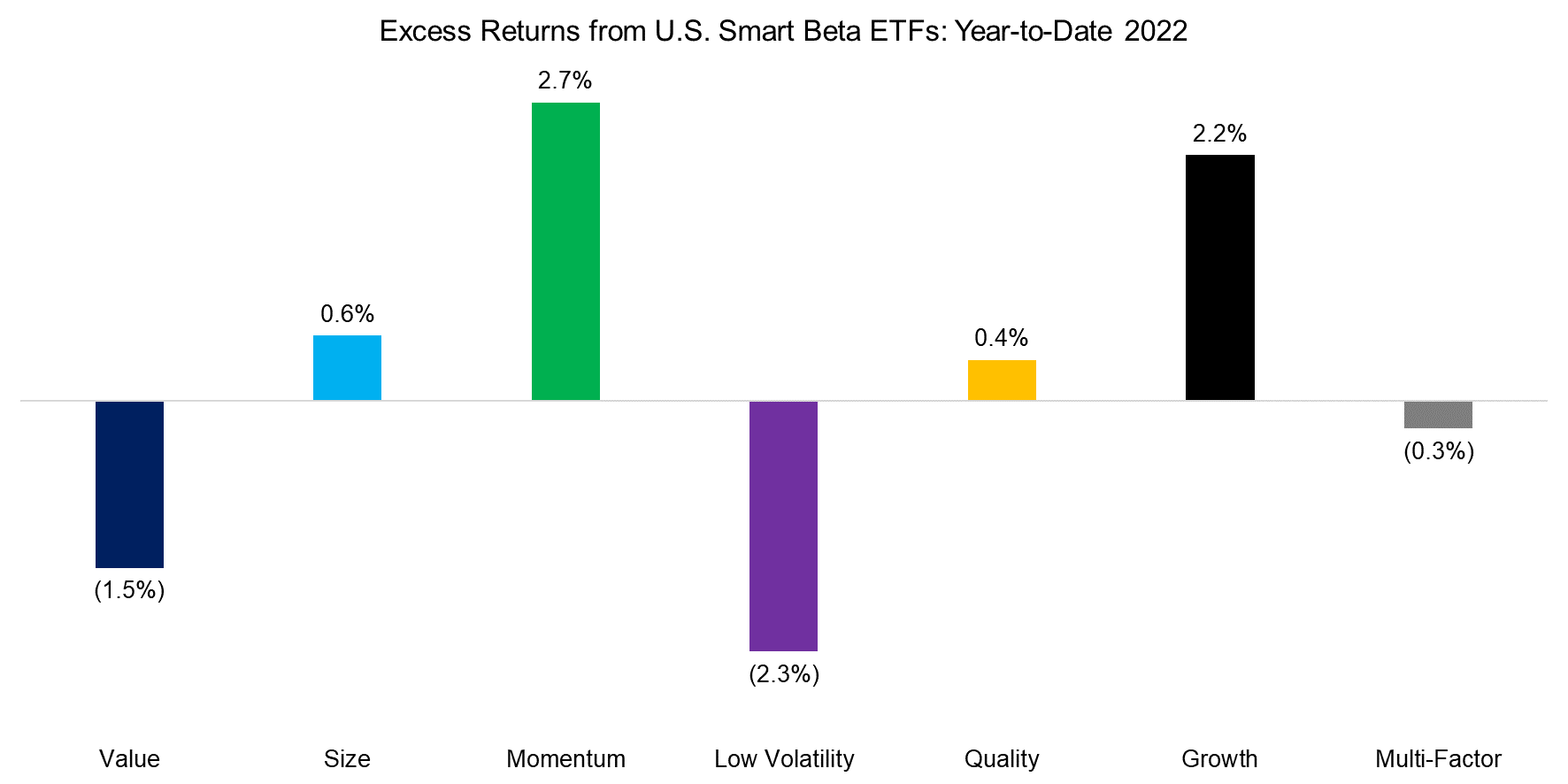Factor Olympics Q3 2022
And the winner is…
October 2022. Reading Time: 10 Minutes. Author: Nicolas Rabener.
SUMMARY
- Value is leading the performance scoreboard in YTD 2022
- Low volatility is the worst-performing factor
- Oddly, the value and low volatility factors are strongly positively correlated
INTRODUCTION
We present the performance of five well-known factors on an annual basis for the last 10 years. Specifically, we only present factors where academic research supports the existence of positive excess returns across market cycles and asset classes (read Factor Olympics Q2 2022).
METHODOLOGY
Our factors are created by constructing long-short beta-neutral portfolios of the top and bottom 10% of stocks in the US, Europe, and Japan, and 20% in smaller markets. Only stocks with a minimum market capitalization of $1 billion are included. Portfolios rebalance monthly and transactions incur 10 basis points of costs.
FACTOR OLYMPICS: GLOBAL RETURNS
The table below shows the long-short factor performance for the last 10 years ranked top to bottom. The global series is comprised of all developed markets in Asia, Europe, and the US. Aside from displaying the factor performance, the analysis highlights the significant factor rotation in terms of profitability from one year to the next, highlighting the benefits of diversified exposure.
The performance of an equal-weighted multi-factor portfolio was positive as of the first half of 2022, but turned negative in the third quarter. Primarily this can be explained by the value, momentum, and low volatility factors peaking at the end of July, and then giving up most of their positive returns thereafter.

Source: Finominal
TRENDS IN GLOBAL FACTOR PERFORMANCE
The performance of equity factors in the third quarter of 2022 is more difficult to explain than in the first half, where stock markets declined as investors fell out of love with overpriced technology stocks as interest rates were increased to combat high inflation. Cheap and low-volatility stocks that were previously ignored became popular.
In the third quarter, stocks continued to decline, but so did cheap and low-volatility stocks. The winners, as indicated by the momentum factor, became the losers. Although the geopolitical environment remains highly volatile, interest rates were increased further by central banks, so investors might have assumed for these kinds of stocks continue to do well.

Source: Finominal
PERFORMANCE OF LONG-SHORT MULTI-FACTOR PRODUCTS
There are only a few liquid alternative mutual funds and ETFs that provide exposure to factors in the long-short format as seen in academic research. Given the poor performance of factor investing in recent years, many products were liquidated.
The performance of the European multi-factor equity fund (MKTN) and multi-factor cross-asset ETF (FLSP) remain flat in year-to-date 2022, in line with the theoretical multi-factor portfolio. The volatility of all three has been exceptionally low given the high volatility of capital markets.
In contrast, the two products from AQR, namely the global multi-factor equity (QMNIX) and multi-factor cross-asset (QSPRX) funds, remain in the positive territory and have given up only minor performance in the third quarter. Both of these products have significant exposure to the value factor.

Source: Finominal
SMART BETA EXCESS RETURNS
Although investors should allocate to factors constructed as long-short portfolios given that these offer high diversification benefits, most invest via long-only smart beta ETFs. Following the money, we highlight the excess returns generated from investing in smart beta ETFs in the US, which represents a universe of 160+ products and approximately $800 billion of assets under management (read Smart Beta or Smart Marketing).
The returns will naturally be somewhat different as long-short factor portfolios are constructed beta-neutral, i.e. there is a short portfolio and leverage is used to achieve beta-neutrality, and stocks are typically weighted equally. Smart beta ETFs are long-only and mostly weight stocks by their market capitalization.
The return signs are the inverse for the value, size, and quality factors, while they are the same for momentum and low volatility factors. Most surprising is that growth-focused smart beta ETFs have outperformed. Given that technology stocks have underperformed, this may be surprising. However, this depends on the definition of growth. For example, if earnings growth is included, then many unprofitable technology stocks that suffered in 2020 will be excluded.

Source: Finominal
FACTOR CORRELATIONS
The correlation matrix below highlights the global one-year factor correlations based on daily data. The current correlations highlight a scenario that is reminiscent of the tech bubble in 2000, where the value and low volatility factors were positively correlated, which is different to the previous years. The positive correlation between value and momentum is also less frequently seen.

Source: Finominal
FURTHER THOUGHTS
Although the performance of the value factor has been perplexing in the third quarter, we need to be careful not to interpret too much into a relatively short time period. The macro environment has not changed significantly and perhaps has gotten more favorable for cheap stocks as investors are getting more concerned about the financing of structurally unprofitable technology firms. The valuation spread between cheap and expensive stocks remains wide from a historical perspective, providing positive headwinds.
RELATED RESEARCH
Defensive and Diversifying Strategies in YTD 2022
Improving the Odds of Value Investing
The Value Factor’s Pain: Are Intangibles to Blame?
Smart Beta vs Alpha + Beta
How Painful Can Factor Investing Get?
ABOUT THE AUTHOR
Nicolas Rabener is the CEO & Founder of Finominal, which empowers professional investors with data, technology, and research insights to improve their investment outcomes. Previously he created Jackdaw Capital, an award-winning quantitative hedge fund. Before that Nicolas worked at GIC and Citigroup in London and New York. Nicolas holds a Master of Finance from HHL Leipzig Graduate School of Management, is a CAIA charter holder, and enjoys endurance sports (Ironman & 100km Ultramarathon).
Connect with me on LinkedIn or X.

